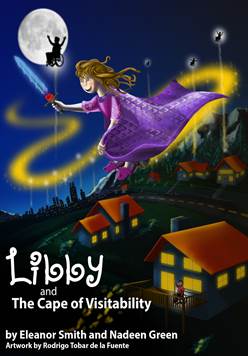Eleanor Smith, the ‘mother’ of the visitability movement, says she will retire this fall. Eleanor is responsible for the building of more accessible homes than anyone else. By her count, surely modest, 70,000 basically accessible homes have been built following her strategies. Knowing Eleanor as a natural advocate and savvy strategist I wonder just how she can retire any more than a leopard can change its spots. I caught up with Eleanor last week. I hope to convey a bit of the wisdom I always feel in her presence.
Eleanor has a presence that captures attention. I have seen rooms full of builders and developers get it when she tells her story. Yet I know she is frustrated with the results. She thought, as many of us advocates have, that the simple ideas of basic access would catch on more quickly. We thought buyers would drive change. There has been insufficient energy from the non-disabled. Progress has been slower than we hoped. Maybe this is what every advocate thinks.
I am not clear our movement has been so much slower than others to effect change. How far have we really come? When were the seeds of the civil rights movement or suffrage? Have we reached our goals? How long have the basics of environmental degradation been recognizable before green and sustainable became current? Our actions in this popular area are still not comprehensively better by any means. The people we are striving to include in advocating access -those who thrive, roll, and absorb communication and information differently- are relatively recent manifestations of medical miracles. This movement has just started.
Eleanor’s initial genus was to recognize the importance of the simple message. “A zero step entry on every house.” adapted from “a lift on every bus.” She has the uncanny ability to hear her opponents argument, find the underlying objection and devise a tactic around their position. We agreed that many of the builders and developers we have met ‘get it’ but cannot get their organizations- local and national homebuilding associations – to adopt and advocate progressive building practices that will improve their products, expand markets and prepare for the aging of the population. Eleanor said, “These builders need to take back their organizations from the staff who think they will be out of a job if they stop fighting.” Smart.
Eleanor has long pointed out that the ‘cost of not doing it’ needs to be put against the cost arguments. That means, for example, that medical system dollars saved when people can rehab in their accessible homes should be counted when discussing the cost (there isn’t any cost, really) of building accessible homes…but these savings should be applied to tax credits or reduced permit fees- jumpstarting the pace of change just as they are used for solar installations. Another example is the lives and other savings realized from seat belts and air bags..which are greater than the costs.
Eleanor’s success is seen in increasing momentum in local visitability organizations. There are over 50 visitability ordinances, laws, regulations or programs listed on the Concrete Change and SUNY Bufalo IDEA Center Visitability Project websites. Grass roots efforts like this means many iterations- each community takes a new tack. This is valuable experimentation for regulations, tactics, arguments.
Eleanor wants people to see ableism as equivalent to racism, ageism and homophobia. Civil justice reform brought school integration, fair housing and racial inclusion in public spaces and workplaces resulting in visible change. But there is a difference. With civil rights whites and African Americans meet at the water cooler or sharing committee work, find common interests, and these new friend go to one’s home to watch the game. The wheelchair user you meet at a restaurant, using the gym or enjoying a concert cannot get into your house.Physical changes to the public built environment changed. But there has not been big picture legislation or court decisions in our area- the private homes most Americans live in. Social barriers that break down from other civil rights action grind to an abrupt halt at the barriers to your front door.
“You can’t legislate morality,” Eleanor said. But Eleanor has noticed attitudes change over time, and particularly, kids are more tolerant. That is the direction of Eleanor’s current effort. A substantial fair housing lawsuit, the National Fair Housing Alliance v Spanos settlement, brought Eleanor to a new task force in her home area and a new colleague, Nadeen Green, a writer blogger and fair housing educator. Together they have written Libby and the Cape of Visitability available in Kindle, Nook and other formats. It is a great story. I cried. It needs to be printed and “A Box in Every School” should be the chant.
Whew. Eleanor is not quitting but taking deserved senior status. She wants to obsess less. She wants to enjoy the (fully visitable) community she lives in. She expects the visitability movement’s next leaders to be more social media savvy. And her work is just beginning with the publication of Libby and the Cape of Visitability. Buy it, gift it.
And expect more good stuff from Eleanor Smith.

 Louis Tenenbaum, one of the nation's leading authorities on aging in place, is the founder of HomesRenewed, a coalition of business, consumers and nonprofits, driving policy and investment to increase the number of age-friendly homes.
Louis Tenenbaum, one of the nation's leading authorities on aging in place, is the founder of HomesRenewed, a coalition of business, consumers and nonprofits, driving policy and investment to increase the number of age-friendly homes.
{ 1 comment… read it below or add one }
Louis,
Thank you for sharing Eleanor’s remarkable tenacity and work with us. I couldn’t agree more and our summer teen program Ramp It UP! is doing its part to help make homes accessible. The National Fair Housing Alliance is a wonderful partner in our work and hope that more can be done in the year ahead.
Audrey Lyon
{ 2 trackbacks }